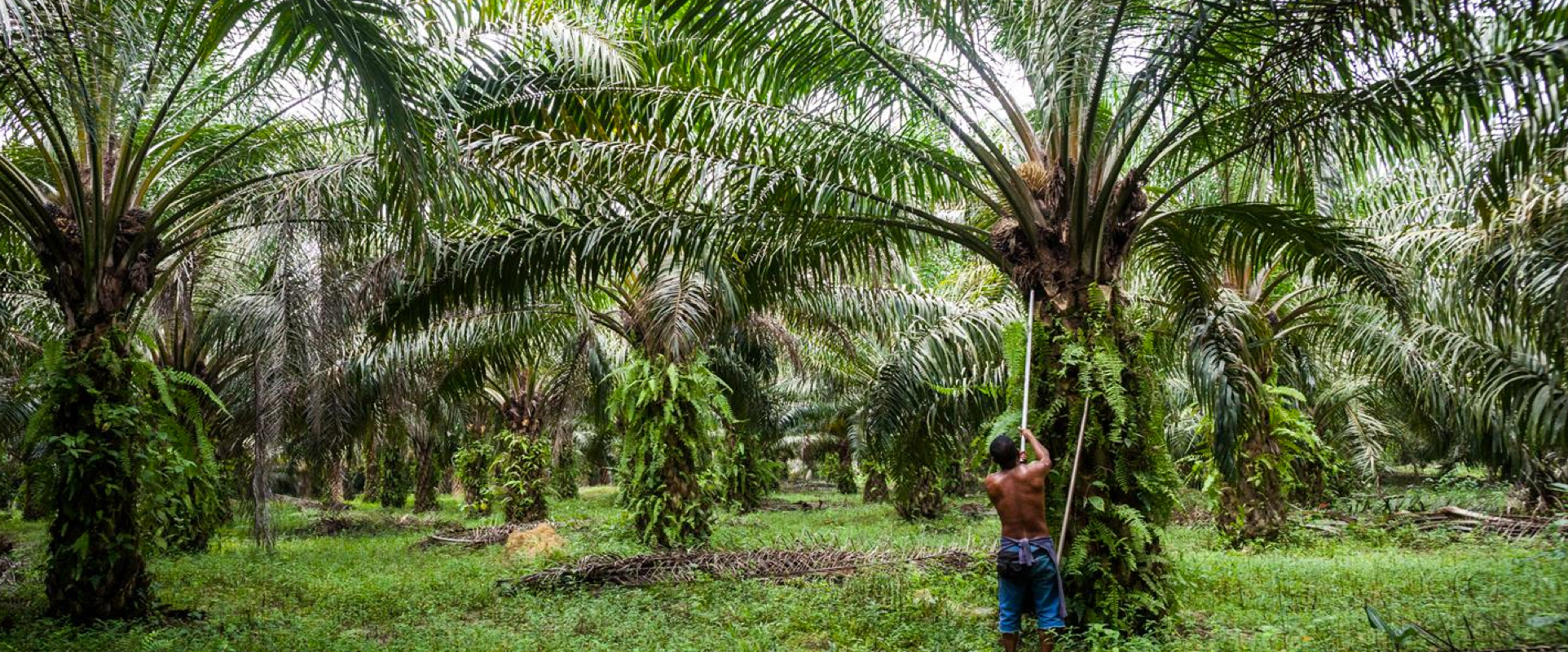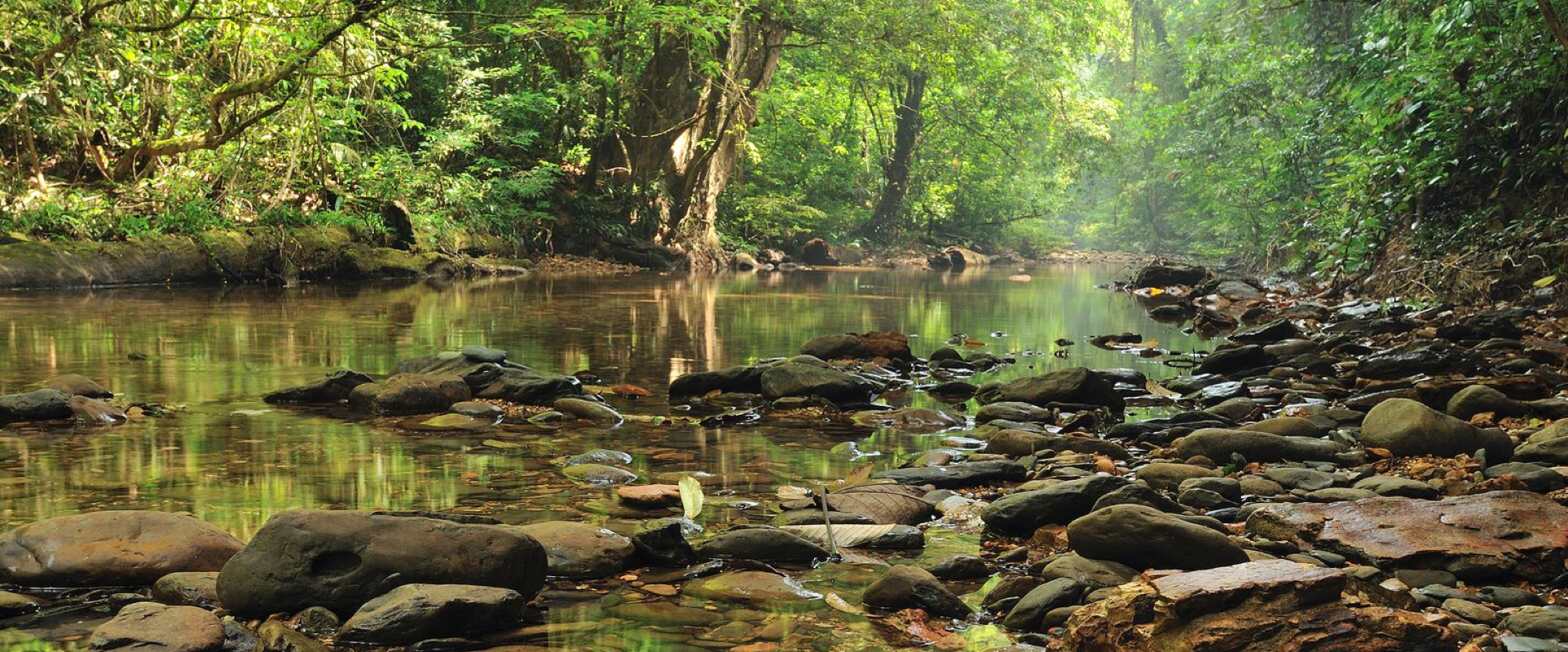
The Challenge
Rainforests across the tropics are being cleared and fragmented to make way for agricultural and timber plantations. Where SEARRP operates in SE Asia, the rapid expansion of the oil palm industry is a major cause of forest fragmentation, but responsible growers (who are complying with sustainability standards) are attempting to design landscapes with the aim of protecting remaining patches of natural forest to conserve as much biodiversity as possible in the landscape – while maintaining the economic benefits of plantations.
The Science
SEARRP scientists have long been investigating the effects of forest fragmentation on biodiversity and forest processes, and there is now a substantial body of research to draw on to help develop policy for better land-use planning in the oil palm industry. For example, Professor Jane Hill and her group at the University of York have looked at insect responses to fragmentation and connectivity in oil palm landscapes, while SEARRP’s ambitious SAFE project, headed up by Dr Rob Ewers at Imperial College, is a long-term landscape-scale experiment (it’s one of the largest ecological field experiments in the world) which is looking at the impacts of fragmentation in a ‘designed’ plantation in Sabah.
SEARRP generates world-leading academic research, but to ensure that it makes a difference to the planet and society we have to make it both accessible and policy-relevant. Dr Jen Lucey is responsible for knowledge exchange at SEARRP, and has built relationships with key players in the sustainable palm oil community to understand their science needs for policy development. She identified how SEARRP’s fragmentation research could fit into the policy dialogue and re-synthesised the available data to develop and interpret findings that could be easily incorporated policy. For example, her syntheses showed that although very large tracts of forest (from tens of thousands to over a million hectares) are necessary to conserve the full complement of species that you would expect in a continuous rainforest. Importantly, in the plantation context, we also found that forest patches of a few hundreds of hectares could provide substantial biodiversity benefits and, moreover, were usually able to regenerate naturally. By contrast forest patches of only a few tens of hectares were found not to support many more species than that of the oil palm planted area and were unlikely to be viable in the long term, at least without applying restoration treatments, since the reproductive capacity of the dominant rainforest trees species was severely reduced. Research is ongoing as part of SEARRP, particularly as part of the SAFE Project, to investigate the role that even very small fragments might play in providing landscape connectivity.
The policy implications being that when designing new plantings, growers should ideally avoid fragmenting existing areas of large tracts of forest, even if they are very degraded, and should plan conservation set-asides that are at least a few hundred hectares in size, if available. The creation of very small patches of forest should be avoided, but if these already exist in plantations they should not be cleared since they may help some species move across the landscape to larger patches of forest.
The Impact
As a result of these activities SEARRP fragmentation science has been incorporated into two key policy developments: The High Carbon Stock (HCS) Approach, which provides a land planning methodology for companies to meet their zero net deforestation commitments, and the development of a new simplified High Conservation Value toolkit for smallholders. Through both these initiatives, SEARRP science has influenced policy on the conservation value of forest set-asides.
Effective implementation of these policy guidelines should help to reduce the level of fragmentation of forests, encourage responsible growers to avoid large tracts of forest, and to improve the ability of agricultural landscapes to support biodiversity through larger, more viable conservation set asides. Ultimately, these efforts will help to reduce tropical biodiversity losses and improve sustainable plantation management.
Key Publications:
Lucey, J. M., Palmer, G., Yeong, K. L., Edwards, D. P., Senior, M. J.M., Scriven, S. A., Reynolds, G. and Hill, J. K. (2016), Reframing the evidence base for policy-relevance to increase impact: a case study on forest fragmentation in the oil palm sector. J Appl Ecol. Accepted Author Manuscript. doi:10.1111/1365-2664.12845
Benedick, S., Hill, J.K., Mustaffa, N., Chey, V.K., Maryati, M., Searle, J.B., Schilthuizen, M. & Hamer, K.C. (2006). Impacts of rain forest fragmentation on butterflies in northern Borneo: species richness, turnover and the value of small fragments. Journal of Applied Ecology., 43, 967–977.
Edwards, D.P., Hodgson, J.A., Hamer, K.C., Mitchell, S.L., Ahmad, A.H., Cornell, S.J. & Wilcove, D.S. (2010). Wildlife-friendly oil palm plantations fail to protect biodiversity effectively. Conservation Letters, 3, 236–242.
Lucey, J.M., Tawatao, N., Senior, M.J.M., Chey, V.K., Benedick, S., Hamer, K.C., Woodcock, P., Newton, R.J., Bottrell, S.H. & Hill, J.K. (2014). Tropical forest fragments contribute to species richness in adjacent oil palm plantations. Biological Conservation, 169, 268–276.
Tawatao, N., Lucey, J.M., Senior, M., Benedick, S., Vun Khen, C., Hill, J.K. & Hamer, K.C. (2014). Biodiversity of leaf-litter ants in fragmented tropical rainforests of Borneo: the value of publically and privately managed forest fragments. Biodiversity and Conservation, 23, 3113–3126.
Yeong, K. L., Reynolds, G., & Hill, J. K. (2016a). Enrichment planting to improve habitat quality and conservation value of tropical rainforest fragments. Biodiversity and Conservation, 25, 957-973.
Yeong, K.L., Reynolds, G. & Hill, J.K. (2016b). Leaf litter decomposition rates in degraded and fragmented tropical rain forests of Borneo. Biotropica. Early View DOI: 10.1111/btp.12319





